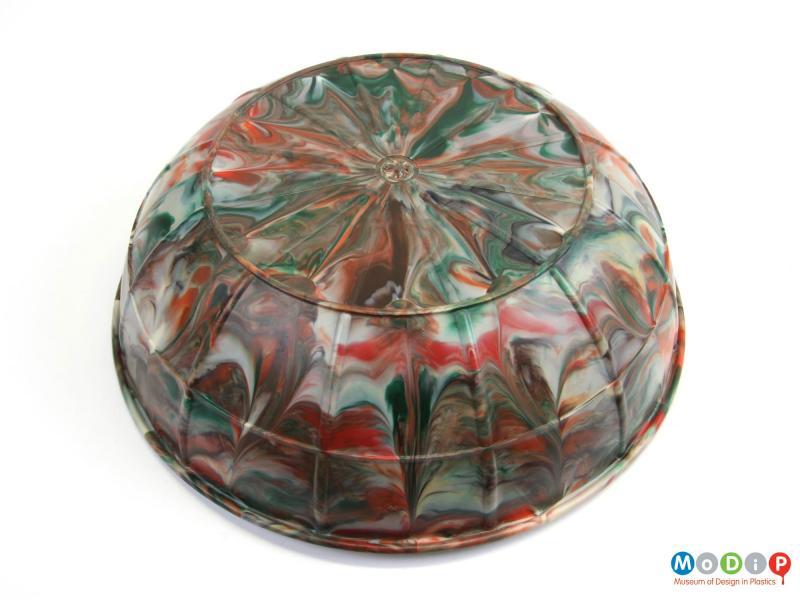
Happy New Year – I hope everyone enjoyed some time off for the holidays and are coming into the new year refreshed.
This blog is a continuation of our preservation series where we examine various “problem plastics” or sensitive plastics that are most likely to degrade without intervention. In the first post (Preservation Series - Cellulose Nitrate) we discussed the importance of plastic identification in preservation, as well as signs of degradation and storage techniques to minimize further damage. We focused specifically on cellulose nitrate as an introduction into this series, so for this post we will continue with a similar, though slightly more stable plastic, cellulose acetate.
Cellulose Acetate – CA
Much like cellulose nitrate, cellulose acetate is a semi-synthetic thermoplastic derived from cellulose, typically from wood or cotton fibres, and a synthetic acid. In this case, the cellulose is treated with a combination of acetic and sulphuric acid. Plasticizers, such as diethyl and dimethyl phthalate, are then added which allow the material to be softened and moulded through the application of heat.
Cellulose acetate was first fabricated by the French chemist Paul Schützenberger in 1864 and has been used for a wide range of applications including, a lacquer (dope) for early aircrafts, artificial fibres (Celanese and Rayon), and a safer film stock to replace cellulose nitrate. The malleability of heated and plasticized cellulose acetate inspired the injection moulding manufacturing technique developed by Dr Arthur Eichengrün in 1919 (a video explaining this process can be found here). Cellulose acetate plastics produced in this fashion are durable, highly glossed, and possess what some describe as a “natural feel” that is noticeably different to other plastic materials. These distinct elements of cellulose acetate made it a popular material for objects that are handled frequently such as spectacle frames, tool handles, fashion accessories, pens, and toys. Over the years, cellulose acetate has been replaced by modern thermoplastics, however, there has been a recent interest in the material due to the sustainability and alternative to fossil fuels aspect of cellulose products.
Identification:
To identify cellulose acetate, you can look for these specific markers:
- Manufacturing: Some examples of cellulose acetate will have visible manufacturing marks from the injection moulding technique. This method involves plastic being injected into a mould through a gate which leaves a “sprue” or plastic remnant. When the sprue is removed, a rough circular mark is left behind showing where the injection occurred - this rough circular mark is often referred to as an injection gate. Smooth circular marks are also sometimes left behind from ejector pins which remove the heated plastic from the mould.

- Smell: Cellulose acetate will give off a smell similar to vinegar when degrading.
- Design: Like cellulose nitrate, cellulose acetate was used to mimic animal products (tortoiseshell, ivory and pearl), specifically in objects that are designed to be handled frequently such as eyeglass frames, object handles, and toys.
- Inscription: Trade names such as Celanese, Estron, Plastacele, Bexoid, Tenite, Clarifoil stamped or printed on the object will let you know your object is composed of cellulose acetate.
Degradation:
While cellulose acetate is slightly more durable and less flammable than cellulose nitrate, it is still prone to degradation and breakdown. Listed below are the recommended environmental levels for storing objects containing cellulose acetate and indications of degradation to be on the lookout for.
Ideal Environment:
- Stored in a space with a temperature between 2-5 °C and a relative humidity between 20-30%.
- The storage space should be well ventilated with the object left unwrapped - preferably within a ventilated archival box to prevent introduction of dust and foreign material.
- A useful list of archival material - https://www.modip.ac.uk/projects/curators-guide/care-plastics/useful-ma…
- The object should be stored separately from other materials as the off gasses produced by decomposition can be harmful to other objects, especially metal materials.
Signs of Degradation:
- A smell of vinegar coming from your object indicates that some amount of moisture has caused the loss of acetate groups allowing for the production of acetic acid. In the wrong proportion, acetic acid, accelerated the breakdown of cellulose acetate and leads to a vinegar smell.
- Over time, plasticizers may work their way to the surface of your objects leaving behind a white powdery substance and causing the object to shrink slightly.
- Crazing and cracking may appear on the surface of a cellulose acetate during degradation as well.

If you notice any of these degradation signs, securely storing your object in a protected and well-regulated environment may help to slow down further deterioration.
If you’re curious about anything discussed in this post, more information can be found on our website, https://www.modip.ac.uk/. You can also email us at modip@aub.ac.uk.
Stay tuned next week for an introduction of our new exhibit, Seen and Unseen!
Shannon Carr, MoDiP Collections Officer
References:
https://www.britannica.com/science/cellulose-acetate
